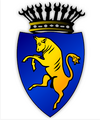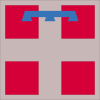Turin
| Turin Torino |
|||
|---|---|---|---|
| — Comune — | |||
| Comune di Torino | |||
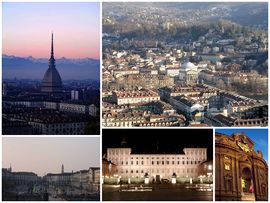 |
|||
|
|||
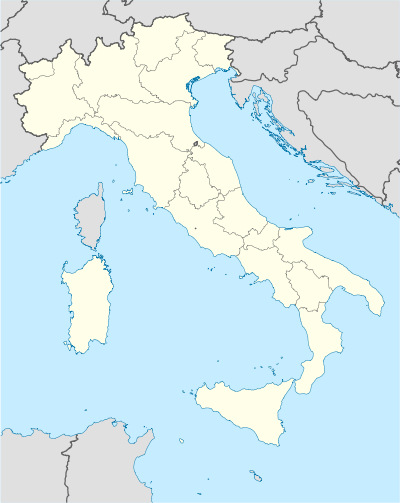 Turin
|
|||
| Coordinates: | |||
| Country | Italy | ||
| Region | Piedmont | ||
| Province | Turin (TO) | ||
| Government | |||
| - Mayor | Sergio Chiamparino (Democratic Party) | ||
| Area | |||
| - Total | 130.17 km2 (50.3 sq mi) | ||
| Elevation | 239 m (784 ft) | ||
| Population (30 April 2009)[1] | |||
| - Total | 910,188 | ||
| - Density | 6,992.3/km2 (18,110/sq mi) | ||
| Demonym | Torinesi | ||
| Time zone | CET (UTC+1) | ||
| - Summer (DST) | CEST (UTC+2) | ||
| Postal code | 10100, 10121-10156 | ||
| Dialing code | 011 | ||
| Patron saint | John the Baptist | ||
| Saint day | 24 June | ||
| Website | Official website | ||
Turin (Italian: Torino, pronounced [toˈriːno] (![]() listen); Piedmontese: Turin, pronounced [tyˈɾiŋ]) is a major city as well as a business and cultural centre in northern Italy, capital of the Piedmont region, located mainly on the left bank of the Po River surrounded by the Alpine arch. The population of the city proper is 909,193 (November 2008) while the population of the urban area is estimated by Eurostat to be 1.7 million inhabitants; the Turin metropolitan area is estimated by OECD to have a population of 2.2 million.[2]
listen); Piedmontese: Turin, pronounced [tyˈɾiŋ]) is a major city as well as a business and cultural centre in northern Italy, capital of the Piedmont region, located mainly on the left bank of the Po River surrounded by the Alpine arch. The population of the city proper is 909,193 (November 2008) while the population of the urban area is estimated by Eurostat to be 1.7 million inhabitants; the Turin metropolitan area is estimated by OECD to have a population of 2.2 million.[2]
Turin is a flourishing, industrious and cosmopolitan European city, which enjoys state-of-the-art technology and architectural developments.[3][4] The city boasts a rich culture and history, and is known for its numerous art galleries, restaurants, churches, palaces, operahouses, piazzas, parks, gardens, theatres, libraries, museums and other venues. Turin is well-known for its baroque, rococo, neo-classical, and Art Nouveau architecture. Much of the city's public squares, castles, gardens and elegant palazzi (such as Palazzo Madama), were built by Sicilian architect Filippo Juvarra, who modelled these buildings on the Baroque and classical style of Versailles.[5] Examples of these French-themed edifices include the Royal Palace of Turin, the Palazzina di caccia of Stupinigi and the Basilica di Superga. Turin is sometimes called the "cradle of Italian liberty", due to its having been the birthplace and home of notable politicians and people who contributed to the Risorgimento, such as Cavour.[6] The city currently hosts some of Italy's best universities, colleges, academies, lycea and gymnasia, such as the Polytechnic University of Turin. Prestigious and important museums, such as the Museo Egizio[7] and the Mole Antonelliana are also found in the city. Turin's several monuments and sights make it one of the world's top 250 tourist destinations, and the tenth most visited city in Italy in 2008.[8]
Turin used to be a major European political centre, being Italy's first capital city in 1861 and being home to the House of Savoy, Italy's royal family.[9] Even though much of its political significance and importance had been lost by World War II, it became a major European crossroad for industry, commerce and trade, and currently is one of Italy's main industrial centres, being part of the famous "industrial triangle", along with Milan and Genoa. Turin is ranked third, after Rome and Milan, for economic strength.[10] With a GDP of $58 billion, Turin is the world's 78th richest city by purchasing power,[11][12] and even though the city was unable to become a "world city", unlike Milan or Rome, it was ranked by GaWC as "economically efficient", along with Jerusalem, Genoa, Macau, Marseille, Liverpool, Strasbourg, Salt Lake City, Seville and Tijuana, to name a few.[13] Turin is also home to much of the Italian automotive industry.[14][15]
Turin is well known as the home of the Shroud of Turin, the football teams Juventus F.C. and Torino F.C., the headquarters of automobile manufacturers Fiat, Lancia and Alfa Romeo, and as host of the 2006 Winter Olympics. Several International Space Station modules, such as Harmony and Columbus, were also manufactured in Turin. It was the capital of the Duchy of Savoy from 1563, then of the Kingdom of Sardinia ruled by the Royal House of Savoy and finally the first capital of a unified Italy.[16]
It is often referred to as "the Capital of the Alps". Turin is also known as "the Automobile Capital of Italy" or the Detroit of Italy; in Italy it is also called "[La] capitale Sabauda".
Contents |
History

Roman times
In the first century BC (probably 28 BC), the Romans created a military camp (Castra Taurinorum), later dedicated to Augustus (Augusta Taurinorum). The typical Roman street grid can still be seen in the modern city. Turin reached about 5,000 inhabitants at the time, all living inside the high walls.
Middle Ages
After the fall of the Roman Empire the town was conquered by the Lombards, then the Franks of Charlemagne (773). The Contea di Torino (or countship) was founded in the 940s, which was held by the Arduinic dynasty until 1050. After the marriage of Adelaide of Susa with Humbert Biancamano's son Otto the family of the Counts of Savoy gained control. While the dignity of count was held by the Bishop as count of Turin (1092–1130 and 1136–1191) it was ruled as a prince-bishopric by the Bishops. In 1230–1235 it was a lordship under the Marquess of Montferrat, styled Lord of Turin.
At the end of the thirteenth century, when it was annexed to the Duchy of Savoy, the city already had 20,000 inhabitants.
Many of the gardens and palaces were built in the fifteenth century when the city was redesigned. The University of Turin was also founded during this period.
16th–18th century
Emmanuel Philibert (Iron Head) made Turin the capital of the Duchy of Savoy in 1563. Piazza Reale, today named Piazza San Carlo and Via Nuova, today called Via Roma were added with the first enlargement of the walls, in the first half of the 17th century; in the same period the Royal palace (Palazzo Reale) was built. In the second half of that century, a second enlargement of the walls was planned and executed, with the building of the arcaded Via Po, connecting diagonally, through the regular street grid, Piazza Castello with the bridge on the Po.
In 1706, during the Battle of Turin, the French besieged the city for 117 days without conquering it. After the subsequent Treaty of Utrecht, the Kingdom of Sardinia was annexed to the Duchy of Savoy and the architect Filippo Juvarra began a major redesign of the city. Now the capital of a European kingdom, Turin had about 90,000 inhabitants at the time.
19th century
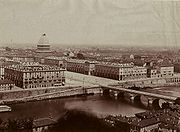
Turin, like the rest of Piedmont, was annexed by France in September 1802. Turin was the prefecture of the French department of Pô from 1802 to the fall of Napoleon in 1814, when the Kingdom of Piedmont-Sardinia was restored with Turin as its capital. After 1814, Piedmont-Sardinia began to actively pursue the unification of Italy. In 1871, the Fréjus Tunnel was opened, making Turin an important communication node between Italy and France. The city in that period had 250,000 inhabitants. Some of the most iconic landmarks of the city, like the Egyptian Museum, the Mole Antonelliana, the Gran Madre di Dio Church and Piazza Vittorio Veneto were built in this period. In 1861, Turin became the capital of the newly proclaimed United Italy.[17] In 1865 the capital was moved to Florence. (Since 8 July 1871, the capital has been Rome.) Turin reacted to the loss of importance by beginning a rapid industrialisation: in 1899 Fiat was founded and Lancia in 1906. The Universal Exposition held in Turin in 1902 is often considered the pinnacle of Art Nouveau design, and the city hosted the Exposition again in 1911. By this time, Turin had grown to 430,000 inhabitants.
20th century
_-_Esposizione_Torino_1911_.jpg)
After World War I, conflicts between workers and industrialists began. The first strikes took place and in 1920 the Lingotto factory was occupied. Turin became a major industrial center during the first part of the 20th century thanks mainly to the automotive industry, insomuch that the city gained the nickname of Automobile Capital.
Turin was a target of Allied strategic bombing during World War II and was heavily damaged by the air raids. The city was a target because of its industrial production, including FIAT, which produced aircraft, tanks and automobiles for the Axis war effort. The Allied campaign in Italy had the Allies landing in southern Italy and pushing northward the fascist and nazist forces. Turin was not captured by the Allies until the end of Spring Offensive of 1945, and even so when the advance guard of the armored reconnaissance units of Brazilian Expeditionary Force reached the city, the place were already free from German presence, whose had retreat after the success of allied offensive and the general insurrection of Italian Partisans that had began on 25 April 1945. Days later troops of Us 1st armored division and US 92nd division came to substitute the Brazilian ones.[18][19]
After World War II, Turin was rapidly rebuilt and its industrial base saw a huge development throughout the 1950s and 1960s, which attracted hundred of thousands of immigrants from the southern regions of Italy. The population reached 1 million in 1960 and peaked at almost 1.2 million in 1971. In the 1970s and 1980s, the automotive industry crisis severely hit the city and its population began to sharply decline, losing more than one-fourth of its total in 30 years.
21st century
The long population decline of the city has begun to reverse itself in recent years, as the population grew from 865,000 in 2001 to 910,000 in 2009.
In 2006, Turin hosted the Winter Olympic Games.
Geography
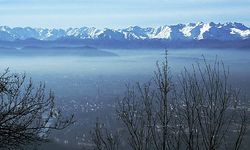
Turin is located in northwest Italy. It is surrounded on the western and northern front by the Alps and on the eastern front by a high hill that is the natural prosecution of the hills of Monferrato. Four major rivers pass through the city: the Po and two of its tributaries, the Dora Riparia (later changed to "Duria Minor" by the Romans, from the Celtic duria meaning "water"), the Stura di Lanzo, and the Sangone.
Climate
Turin is located in a Humid subtropical climate zone (Köppen climate classification Cfa),[20] although close proximity to mountainous terrain results in conditions that can be variable with some continental characteristics. This is in contrast to the Mediterranean climate characteristic of the coast of Italy. Winters are cold but dry, summers are mild in the hills and quite hot in the plains. Rain falls mostly during spring and autumn; during the hottest months, otherwise, rains are less usual but more strong (thunderstorms are usual). During the winter and autumn months banks of fog, which are sometimes very thick, form in the plains.[21]
| Climate data for Torino (Caselle Airport, 1961-1990) | |||||||||||||
|---|---|---|---|---|---|---|---|---|---|---|---|---|---|
| Month | Jan | Feb | Mar | Apr | May | Jun | Jul | Aug | Sep | Oct | Nov | Dec | Year |
| Average high °C (°F) | 5.8 (42.4) |
8.4 (47.1) |
12.7 (54.9) |
16.6 (61.9) |
20.7 (69.3) |
24.7 (76.5) |
27.6 (81.7) |
26.5 (79.7) |
23.1 (73.6) |
17.3 (63.1) |
10.8 (51.4) |
6.9 (44.4) |
16.8 (62.2) |
| Average low °C (°F) | -3.3 (26.1) |
-1.1 (30) |
2.1 (35.8) |
5.6 (42.1) |
9.9 (49.8) |
13.8 (56.8) |
16.3 (61.3) |
15.7 (60.3) |
12.6 (54.7) |
7.2 (45) |
1.8 (35.2) |
-2.3 (27.9) |
6.5 (43.7) |
| Precipitation mm (inches) | 40.5 (1.594) |
52.5 (2.067) |
76.9 (3.028) |
104.1 (4.098) |
120.3 (4.736) |
97.6 (3.843) |
66.6 (2.622) |
79.8 (3.142) |
70.1 (2.76) |
88.9 (3.5) |
75.5 (2.972) |
41.6 (1.638) |
914.4 (36) |
| % Humidity | 75 | 75 | 67 | 72 | 75 | 74 | 72 | 73 | 75 | 79 | 80 | 80 | 74.8 |
| Avg. precipitation days | 4.4 | 5.2 | 7.0 | 8.4 | 10.4 | 8.7 | 5.9 | 7.2 | 6.0 | 5.8 | 6.8 | 4.1 | 79.9 |
| Sunshine hours | 111.6 | 118.7 | 158.1 | 180.0 | 195.3 | 219.0 | 260.4 | 223.2 | 168.0 | 142.6 | 105.0 | 108.5 | 1,990.4 |
| Source: Italian Air Force Meteorological Service [22] | |||||||||||||
Administration
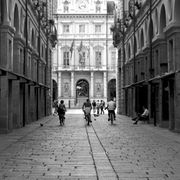
The mayor of Turin is directly elected every four years. Sergio Chiamparino, the current mayor, belongs to the centre-left coalition. Turin is divided into 10 boroughs; these do not necessarily correspond to historical districts in the city. The following list numerates the present day boroughs :(named Circoscrizioni) and the today location of the historical districts inside them:
- Circoscrizione 1 Centro – Crocetta
- Circoscrizione 2 Santa Rita – Mirafiori Nord
- Circoscrizione 3 San Paolo – Cenisia – Pozzo Strada – Cit Turin – Borgata Lesna
- Circoscrizione 4 San Donato – Campidoglio – Parella
- Circoscrizione 5 Borgo Vittoria – Madonna di Campagna – Lucento – Vallette
- Circoscrizione 6 Barriera di Milano – Regio Parco – Barca – Bertolla – Falchera – Rebaudengo – Villaretto
- Circoscrizione 7 Aurora – Vanchiglia – Sassi – Madonna del Pilone
- Circoscrizione 8 San Salvario – Cavoretto – Borgo Po
- Circoscrizione 9 Nizza Millefonti – Lingotto – Filadelfia
- Circoscrizione 10 Mirafiori Sud
Main sights
- For a complete list of Turin's landmarks, see: Buildings and structures in Turin
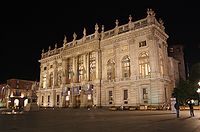

Secular edifices
The symbol of Turin is the Mole Antonelliana, which is named after the architect who built it, Alessandro Antonelli. Construction began in 1863 as a Jewish synagogue. Nowadays it houses the National Museum of Cinema, and it is believed to be the tallest museum in the world (167 metres or 548 feet).
The Palatine Towers is an ancient Roman-medieval structure that served as one of four Roman city gates, which allowed access from north to the cardus maximus, the typical second main street of a Roman town. The Palatine Towers are among the best preserved Roman remains in northern Italy.
The Egyptian Museum of Turin specialises in archaeology and anthropology, in particular the Art of Ancient Egypt. It is home to what is regarded as one of the largest collections of Egyptian antiquities outside of Egypt. In 2006 it received more than 500,000 visitors.[23]
The Museum of Oriental Art houses one of the most important Asian art collections in Italy.[24][25]
Religious buildings
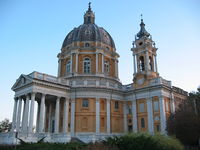
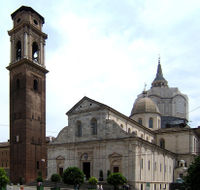
Turin Cathedral, dedicated to Saint John the Baptist (Italian San Giovanni Battista), is the major church of the city. It was built during 1491–1498 and it is adjacent to an earlier campanile (1470). The Chapel of the Holy Shroud, the current resting place of the Shroud of Turin, was added to the structure in 1668–1694. Attached to the cathedral is the chapel of the Santissimo Sudario, built by Guarini (1694), where is preserved in a casket a cloth believed to be the shroud in which the Body of Christ was wrapped when it was taken down from the Cross, The Church of Corpus Domini records a miracle which took place during the sack of the city in 1453, when a soldier was carrying off an ostensorium containing the Blessed Sacrament: the ostensorium fell to the ground, while the Host remained suspended in air. The present splendid church, erected in 1610 to replace the original chapel which stood on the spot, is the work of Ascanio Vittozzi. The Consolata, a sanctuary much frequented by pilgrims, stands on the site of the tenth-century monastery of S. Andrea, and is the work of Guarini. It was sumptuously restored in 1903. Outside the city, are: S. Maria Ausiliatrice, erected by Don Bosco; the Gran Madre di Dio, erected in 1818 on occasion of the return of King Victor Emmanuel I of Sardinia; S. Maria del Monte (1583) on the Monte dei Cappucini; In the hills overlooking the city is the basilica church of Superga, providing a view of Turin against a backdrop of the snow-capped Alps. The basilica holds the tombs of many of the dukes of Savoy, as well as many of the kings of Sardinia. Superga can be reached by means of the Superga Rack Railway from the suburb of Sassi. The Basilica of Superga, with a dome 244 feet high, the work of Juvarra, built by Amedeo II ex voto for the deliverance of Turin (1706), and which has served since 1772 as a royal mausoleum.[26]
Villas, parks and gardens

- Parco della Pellerina – 837,220 m2 (the biggest urban park in Italy)[27]
- Parco della Panoramica- 820,000 m2
- Parco del Meisino – 450,000 m2
- Parco della Maddalena – 450,000 m2
- Parco Colletta – 448,000 m2
- Parco della Rimembranza – 442,000 m2
- Parco Colonnetti – 385,800 m2
- Parco del Valentino – 421,000 m2, the main and most visited park in the city
- Giardini Reali di Torino (Royal Gardens of Turin)
- Parco naturale della Collina di Superga – 7,458,500 m2
- Parco Cavour – 186,990 m2
- Parco Ruffini or "del Valentino nuovo" – 127,860 m2
- Parco Rignon – 46,200 m2
The most popular park in the city is The Parco del Valentino: in 1961 for the celebrations of Italia61 (Italian unification centenary) an important international exhibition (FLOR61: Flowers of the world in Turin) took place in the park with 800 exhibitors from 19 countries. On the occasion the plan for the new lighting of the park, with its fountains and paths, was carried out by Guido Chiarelli, the head engineer at the City Hall.

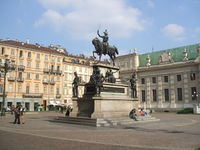
Other large parks are the Parco delle Pellerina, the Parco del Colletto, the Rignon park and the recent Colonnetti park. Around the city, there are several other parks, such as the Parco della Mandria and the Parco della Palazzina di Caccia di Stupinigi, ancient hunting grounds of the Savoy, and those situated on the hill of Turin. Many parks are smaller, and are present in the various districts: there are also 240 playgrounds present in such parks. The mayor Amedeo Peyron realised in the early 1960s the first garden in Italy with games for children. According to a report of Legambiente 2007, Turin is the first Italian city to impose structures and policies on childcare.[28]
Turin, as the former capital of the Kingdom of Sardinia, is home of the Savoy Residences. In addition to the 17th-century Royal Palace, built for Madama Reale Christine Marie of France (the official residence of the Savoys until 1865) there are many palaces, residences and castles in the city centre and in the surrounding towns. Turin is home to Palazzo Chiablese, the Royal Armoury, the Royal Library, Palazzo Madama, Palazzo Carignano, Villa della Regina, and the Valentino Castle. The complex of the Residences of the Royal House of Savoy in Turin and in the nearby cities of Rivoli, Moncalieri, Venaria Reale, Agliè, Racconigi, Stupinigi, Pollenzo and Govone was declared a World Heritage Sites by UNESCO in 1997. Turin's gardens include the Orto Botanico dell'Università di Torino, a historic botanical garden.
Demographics
| Historical populations | ||
|---|---|---|
| Year | Pop. | %± |
| 1861 | 173,305 | — |
| 1871 | 210,873 | 21.7% |
| 1881 | 250,655 | 18.9% |
| 1901 | 329,691 | 31.5% |
| 1911 | 415,667 | 26.1% |
| 1921 | 499,823 | 20.2% |
| 1931 | 590,753 | 18.2% |
| 1936 | 629,115 | 6.5% |
| 1951 | 719,300 | 14.3% |
| 1961 | 1,025,822 | 42.6% |
| 1971 | 1,167,968 | 13.9% |
| 1981 | 1,117,154 | −4.4% |
| 1991 | 962,507 | −13.8% |
| 2001 | 865,263 | −10.1% |
| 2009 | 910,188 | 5.2% |
| Source: ISTAT 2001 | ||
In 2009, the city proper had a population of about 910,000, which is a significant increase on the 2001 census figure. This result is due to a growing immigration form Southern Italy and abroad. Approximately a 5.77 percent of the population is composed of foreigners, the largest numbers coming from Romania (44,158), Morocco (22,511), Albania (9,165), Peru (7,044), China (5,483), and Moldova (3,417).[29] Like many Northern Italian cities, there is a large proportion of pensioners in comparison to youth. Around 18 percent of the population is under 20 years of age while, 22 percent is over 65.[30] The population of the Turin urban area totals 1.7 million inhabitants, ranking fourth in Italy, while the Turin metropolitan area has a population of 2.2 million inhabitants. The median age is 43.7.[2]
Economy
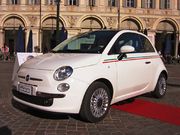
Turin is a major industrial center, where the headquarters of the car company FIAT is located. The city has a GDP of $58 billion and is the world's 78th richest city by purchasing power.[11][12] Even though the city was unable to become a "world city", it was ranked by GaWC as "economically efficient".
Turin is home to the Lingotto building, which was at one time the largest car factory in the world, and now houses a convention centre, a concert hall, a multiplex, an art gallery, a shopping centre and a Le Méridien hotel. Other companies founded in Turin are Lancia, Pininfarina, Bertone, Sparco, Italdesign, Ghia, Fioravanti, Stola, Intesa Sanpaolo (Italy's largest bank), Superga, Invicta (1821), Lavazza, Martini & Rossi, Kappa and the chocolate factory Caffarel.
The city is also well known for its aerospace industry (Alenia). The International Space Station modules Harmony, Columbus, Tranquility, as well as the Cupola and all MPLMs were produced in Turin. The future European launcher projects beyond Ariane 5 will also be managed from Turin, by the new NGL company, a subsidiary of EADS (70%) and Finmeccanica (30%).
Turin is also the birthplace of some of the country's main companies, such as Telecom Italia (telecommunications), Rai (television), and cinema. Most of these industries have since moved their headquarters to other parts of Italy, but Turin still retains the National Museum of Cinema (in the Mole Antonelliana building).
On addition to industry, Turin has also established itself as an increasingly popular tourist destination, being the 203rd in the world in 2008, with around 240,000 international arrivals every year, coming after Heidelberg and Alicante, and surpassing Blackpool and Bilbao.[8] It came 10th in Italy, also coming after Rome, Milan, Venice, Florence, Naples, Palermo, Rimini, Verona and Genoa.[8]
Culture
| Residences of the Royal House of Savoy* | |
|---|---|
| UNESCO World Heritage Site | |
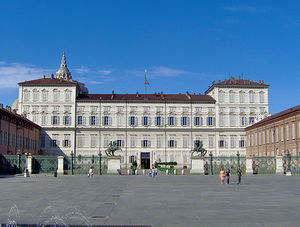 |
|
| The Palazzo Reale di Torino (Royal Palace of Turin), which was once the home of the House of Savoy.
|
|
| Type | Cultural |
| Criteria | i, ii, iv, v |
| Reference | 823 |
| Region** | Europe and North America |
| Inscription history | |
| Inscription | 1997 (21st Session) |
| * Name as inscribed on World Heritage List. ** Region as classified by UNESCO. |
|
Education
- Main page: Education in Turin
Turin is home to one of Italy's oldest universities, the University of Turin, which still ranks among the best universities in Italy. Another established university in the city is the Polytechnic University of Turin, that ranks among Top 50 universities in the world and # 1 in Italy ( "Academic Ranking of World Universities" published by Institute of Higher Education of Shanghai Jiao Tong University, in engineering, technology and computer science fields). The business school ESCP Europe, ranked among the 10 best business schools in Europe, also has a campus in Turin. In recent years some small English language education institutions have been opened (St. John International University, International University College of Turin, Buddies Elementary School).
Political Science
With the Risorgimento, or "Resurgence", the city of Turin becomes the home of the struggle for Italian unification. At first this plan was pursued, according antimazziniana by a group of moderates from Piedmont with a Catholic and loyal to the monarchy: among these were Vincenzo Gioberti, Cesare Balbo and Massimo D'Azeglio, convinced that the unification of Italy were to come across a federation led by the Pope and by the army of Charles Albert. That was the plan of neo-Guelphs, frustrated by a few years from the behaviour of Pius IX.
To resume some of their ideas, but clearly in the direction of liberal and progressive, was Camillo Benso Count Cavour who, although rejected the insurgency and democratic vision of Mazzini, was a supporter of a program of economic and social reforms which led first Piedmont and then Italy, through the alliance of the elites of the Peninsula, to the level of advanced nations. The program of neo-Guelph Gioberti, Cavour resisted the phrase "free church in a free state" and passivity towards the European events of Balbo he, once he becomes prime minister, moved towards a system of alliances with Napoleon III and l 'England led by liberal governments. Although not considered to achieve the implementation of its program through the participation of the people, however, Cavour encouraged the freedom of association, mutual aid societies and popular education. In addition, he helped transform the Statute Albert, through the practise, in a Constitution Member. The work of Cavour summoned from other parts of Italy some former Mazzini, disappointed by the failed insurrection, who found refuge in Turin. Between there were these Francesco De Sanctis and Nicholas Tommaseo, which in Turin composed the first Dictionary of Italian.
A renewal of liberal thought came with the new century, due to increased mass participation in political life and growth of the labour movement, by the Piero Gobetti. These, in the twenties, was founded in Turin the magazine The Liberal Revolution and then The Baretti, in which he also collaborated Eugenio Montale, Gobetti which had been the first editor of the collection Ossi di sepia. In addition to Montale, Gobetti gathered around the magazine a generation of young people in Turin, like Leone Ginzburg, Franco Antonicelli, Lionello Venturi, Felice Casorati, Carlo Levi , Augusto Monti, Giacomo Debenedetti, Natalino Sapegno and Mario Fubini.
Gobetti condemned the liberal ruling class that had led to fascism, while considering the heir of thought is that of Cavour Carlo Cattaneo. However, Gobetti identified in the proletariat and the bourgeoisie in the engine of the moral and political renewal of the nation.
Also in Turin, immediately after the World War, Antonio Gramsci, Palmiro Togliatti, Tasca and Umberto Terracini had given birth to the magazine The new order, that would constitute the nucleus of what in 1921 would become Italian Communist Party. This online magazine condemned the reformist Socialists, identifying the Councils of Soviet factory and experience the line of political struggle.
Central to the Italian political culture has been the contribution of many intellectuals in Turin after World War II, among others, the group of students and professors who served in the ranks of Justice and Liberty and Party Action, heirs of thought Gobetti (among others, Cesare Pavese, Massimo Mila, Natalia Ginzburg, Alessandro Galante Garrone, Vittorio Foa and Norberto Bobbio).
Among the associations responsible for the study of historical thought and politics, who are based in Turin, are to be mentioned: the Gramsci Foundation, the Piero Gobetti Study Center, the Institute Gaetano Salvemini, the Center Pannunzio, the Rosselli, the Fondazione Luigi Einaudi and Fondazione Luigi Firpo - Center for Studies of Political Thought.
Publishing, journalism and media
After Alexandria, Madrid, New Delhi, Antwerp and Montreal, Turin was chosen by UNESCO as World Book Capital for the year 2006. The International Book Fair is one of the most important fairs of its kind in Europe. Turin is home to one of Italy's principal national newspapers, La Stampa, and the sports daily newspaper Tuttosport. The city is also served by other publications such as the Turin editions of La Repubblica, il Giornale, Leggo, City, Metro and E Polis. RAI has had a production centre in Turin since 1954.
Literature

A literary centre for many centuries, Turin began to attract writers only after the establishment of the court of the Duchy of Savoy.
One of the most famous writers of the 17th century is Giambattista Marino, which in 1608 moved to the court of Charles Emmanuel I; he however suffered an assassination attempt by a rival, Gaspar Murtola, and was later imprisoned for a year because of gossip that he had said and written against the duke, and perhaps for this, in 1615 he left Turin and moved to France.
The main literary figures during the Baroque age in Turin were Emanuele Tesauro and Alessandro Tassoni; in the next century the poet Vittorio Alfieri from Asti livede here for a while. The situation was very different in the 19th century, especially since the city became a point of reference for Italian unification and, subsequently, the capital of the Kingdom of Italy. Indeed, in those years Tommaseo, Settembrini and John Meadows resided in the city. A major literary and cultural woman of that time was Olympia Savio.
In the late 19th century and early 20th century, Turin was home to writers such as Guido Gozzano, Edmondo De Amicis and Emilio Salgari and Dino Segre, known by the pseudonym of Pitigrilli.
Turin has a very important role in Italian literature after World War II: to act as a catalyst is the publishing house founded by Giulio Einaudi, for which worked figures including Cesare Pavese, Italo Calvino, Vitaliano Brancati, Primo Levi, Natalia Ginzburg, Fernanda Pivano, Beppe Fenoglio, Carlo Fruttero and Franco Lucentini. In more recent years, writers active in the city are Giovanni Arpino, Nico Orengo, Giuseppe Culicchia, Margaret Oggero, Laura Mancinelli, Alessandra Montrucchio, Alessandro Perissinotto, Guido Quartz, Piero Soria and Alessandro Baricco.
Alessandro Baricco was also among the founders of the School Holden, dedicated to teaching the techniques of writing.
Art

Remaining a village for a long time, in 1559 the Duke Emanuele Filiberto of Savoy made Turin the capital of his domains. In the Baroque period, Turin became important to a court and the Dukes had the ambition to transform the city into a major artistic and cultural capital. That is why working in a city of artists of great repute, especially architects and planners, like Carlo di Castellamonte and his son Amedeo,which include the route of a Roman castrum the new capital and build beautiful buildings, Guarino Guarini and, in the eighteenth century, Filippo Juvarra and Alfieri.
As for the painting and the visual arts, Turin becomes a point of reference especially in the twentieth century. In the twenties by the painter Felice Casorati, which inspired a number of students, called The group of six of Turin, including Carlo Levi, Henry Paolucci, Gigi Chessa, Francis Menzio, Nicola Galante and Jessie Boswell. Two important artists were born in Turin: the sculptor Umberto Mastroianni, and the architect Carlo Mollino.
Between the sixties and seventies, the international center of Turin 'Arte Povera, the presence in the city of artists like Alighiero Boetti, Mario Merz, Giuseppe Penone, Piero Gilardi and Michelangelo Pistoletto. In those years is a strong artistic influence of a famous designer, Armando Testa, the founder of advertising agency. Currently operating in the city are established artists, like Ugo Nespolo and Carol Rama.
Sport
The city is famous for two football teams: Juventus F.C. (founded in 1897) and Torino F.C. (founded in 1906). Juventus has the larger fan base, especially outside of Italy while Torino enjoys a more localised support, much like most other major European cities who are home to two football clubs (e.g. Munich, Madrid and Liverpool). The two clubs contest the oldest derby in Italy: the Derby della Mole or the Turin derby.[31]
Juventus is Italy's most successful football club, and one of the most prestigious and successful in the world.[32] It ranks joint sixth in the list of the world's clubs with the most official international titles (third between European clubs),[33] was the first team in football history –and the only one in the world to date (2010)– to have won all official international championships and cups for clubs[34][35] recognised by one of the six continental confederations (UEFA[36] in this case) and by FIFA.[37] Their former stadium Stadio delle Alpi was one of the host stadiums for the 1990 FIFA World Cup and it was demolished in 2006 to make way for Juventus' new stadium, the Juventus Arena. The two sides currently share occupancy of the Stadio Olimpico di Torino but Torino will have full use of the ground when Juventus move to their new stadium.
The FISA (International Rowing Federation) was founded in Turin in 1892.
In 1949, in the Superga air disaster, a plane carrying almost the whole Torino F.C. team (at that time the most important team in Italy and known as the Grande Torino) crashed into the Basilica of Superga in the Turin hills. Valentino Mazzola, father of Ferruccio and Sandro Mazzola (who were later to become football champions), was among those who perished in the crash.
The C.U.S. Torino volleyball team won the domestic league four times and, in the 1979–80 season, the Volleyball European Champion's Cup. It was the first team from western Europe to win this competition. In the 1990s the team was dismantled as a result of financial issues.
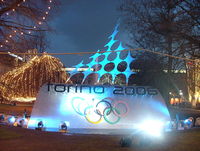
Turin hosted the 2006 Winter Olympics from 10 February 2006, through 26 February 2006. Turin, with a metropolitan area of 1.7 million,[38] was the largest city to have ever hosted a Winter Olympics.[39][40] The title fell to Vancouver, British Columbia, Canada, (2.5 million) when that city hosted the XXI Olympic Winter Games.[41]
Cinema
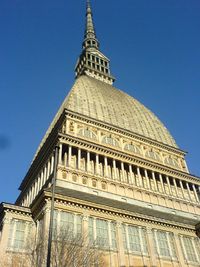
Turin is the Italian city where film chromatography was first established. As such, it forms the birthplace of Italian cinema. Because of its historic, geographical and cultural proximity to France, Italian filmmakers were naturally influenced by French cinema and the Lumière brothers. The first Italian cinema screening occurred in Turin in March 1896. In November 1896, Italian filmmakers performed the first cinema screening of a film before a fee-paying audience.[42]
By the start of the 20th century (especially after 1907), a number of first Italian films were aired in Turin. Examples include Giovanni Pastrone Cabiria, in 1914, one of the first blockbusters in history.
During the 1920s and 30s, Turin hosted a number of film productions and major film studios (film houses), such as the Ambrosio, Itala film, Aquila and Fert Studios.[43] Turin's prominence in Italian film continued until 1937, the Cinecitta was inaugurated in Rome.
After WWII, the cinematic scene in Turin, however, continued to thrive. 1956 saw the opening of the National Museum of Cinema, first housed in the Palazzo Chiablese and then, from 2000, the imposing headquarters of the Mole Antonelliana. In the 1980s a group of academics and critics of Turin gave rise, with the support of local authorities, the film festival Film Festival that since 1997 was renamed the Torino Film Festival to get a point of reference at international level especially for experimental cinema and youth, second only to the historical Venice Film Festival in Italy.
Always take place in Turin on Torino GLBT Film Festival, the International Festival of Women's Cinema, the Sottodiciotto Film Festival connected to the themes of adolescence, CinemAmbiente and VIEW Conference (formerlyVirtuosity), an event dedicated to virtual reality.
Today Turin is one of the main of cinematographic and television centres in Italy, thanks to the role of Turin Film Commission that reports the production of many feature films, soap operas and commercials.
In 2002 will be opened as the studies Fert with the new name of Virtual Reality & Multi Media Park and Lumiq Studios begins its work.
They were born in Turin on the first Italian art house (the Roman Empire in the Gallery Subalpina in 1971), the main national film associations (l 'Ajax) and the first multiplex of the country (Elisha in 1983).
Cuisine

Turin chocolate firms produce a typical chocolate, called Gianduiotto, named after Gianduja, a local Commedia dell'arte mask; plus many other kinds of chocolate. Every year the town organises CioccolaTÒ, a two-week chocolate festival run with the main Piedmontese chocolate producers, such as Caffarel, Streglio, Venchi and others, as well as some big international companies, such as Lindt & Sprüngli.
Since the mid 1980s, the Piedmont region has also benefited from the start of the Slow Food movement, and Terra Madre, events that have highlighted the rich agricultural and vinicultural value of the Po valley and northern Italy.
Other
Shroud of Turin
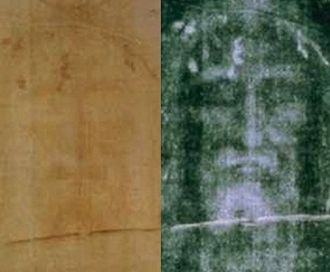
The city is home to the Shroud of Turin. It is a linen cloth bearing the image of a man who appears to have suffered physical trauma in a manner consistent with crucifixion. It is kept in the royal chapel of the Cathedral of Saint John the Baptist in the city centre. The origins of the shroud and its image are still the subject of intense debate among scientists, theologians, historians and researchers. It is popularly believed to be a depiction of Jesus Christ, however this matter is still controversial, as there seems to be a sufficient amount of historical and scientific evidence supporting the idea that it is, or is not, the Holy Face of Jesus. Nonetheless, it is a symbol of religious devotion and is one of the city's main symbols and tourist attractions.
Transport

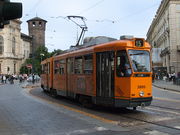
The town currently has a large number of rail and road work sites. Although this activity has increased as a result of the 2006 Winter Olympics, parts of it had long been planned. Some of the work sites deal with general roadworks to improve traffic flow, such as underpasses and flyovers, but two projects are of major importance and will change the shape of the town radically.
One is the Spina ("spine") which includes the doubling of a major railroad crossing the town. The railroad previously ran in a trench, which will now be covered by a major boulevard. The Porta Susa on this section will become Turin's main station.
The other major project is the construction of a subway line based on the VAL system, known as Metrotorino. This project is expected to continue for years and to cover a larger part of the city, but its first phase was finished in time for the 2006 Olympic Games (inaugurated on 4 February 2006 and opened to the public the day after). The first leg of the subway system linked the nearby town of Collegno with Porta Susa railway station in Turin's town centre; on 4 October 2007 the line was extended to Porta Nuova railway station. This underground transportation project has historical importance for Turin, as the town has dreamed of an underground line for decades, the first project dating as far back as the twenties. In fact, the main street in the town centre (Via Roma) runs atop a tunnel built during the fascist era (when Via Roma was built). The tunnel was supposed to host the underground line but is now used as an underground car park. A project to build an underground system was ready in the seventies, with government funding for it and for similar projects in Milan and Rome; whilst the other two cities went ahead with the projects, Turin local government led by mayor Diego Novelli shelved the proposal as it believed it to be too costly and unnecessary, but that only meant more funding for Rome and Milan.
The city has an international airport known as Caselle International Airport Sandro Pertini (TRN), located north of the city about 13 kilometres from downtown and connected to the city by a railway service (from Dora Station) and a bus service (from Porta Nuova and Porta Susa railway stations).
Notable natives
- Luisa Accati (born 1942), historian and social anthropologist.
- Giovanni Agnelli (1866–1945), founder of Fiat.
- Edoardo Agnelli (1892–1935) industrialist, director of FIAT and Juventus F.C.'s president.
- Gianni Agnelli (1921–2003), influential chairman, director of FIAT and Juventus F.C. president.
- Umberto Agnelli (1934–2004) industrialist, director of FIAT and Juventus F.C. president.
- Giuliano Amato (born 1938), politician, former Prime Minister of Italy.
- Amedeo Avogadro (1776–1856), physicist.
- Alessandro Baricco (born 1958), writer.
- Fred Buscaglione (1921–1960), singer and songwriter.
- Giuseppe Marc'Antonio Baretti (1719–1789), critic.
- Camillo Benso, count of Cavour, politician (Italian unification).
- Roberto Bettega, former footballer and manager.
- Norberto Bobbio (1909–2004), historian and philosopher.
- Giampiero Boniperti, former footballer and Juventus F.C.'s president.
- Gian Vittorio Bourlot, co-founder of the A.L.A.I. (Associazione Librai Antiquari d'Italia)
- Gianpiero Combi (1902–1956), former footballer. 1934 World Cup champion.
- Arturo Brachetti
- Carla Bruni (born 1967), singer, model and wife of French president Nicolas Sarkozy.
- Pierre Paul Caffarel (1795–1850), founder of the first chocolate factory in the world.
- Giorgio Cagnotto, silver medalist Olympic diver
- Antonio Benedetto Carpano (1764–1815), inventor of vermouth and apéritif.
- Leo Chiosso (1920–2006), lyricist, songwriter with Fred Buscaglione.
- Robert Fano (1917–2004), engineer.
- Galileo Ferraris (1847–1897), physicist and electrical engineer.
- Lorenzo Ferrero (born 1951), composer
- Piero Gobetti (1901–1926), intellectual.
- Joseph Louis Lagrange (1736–1813), mathematician.
- Vincenzo Lancia (1881–1937), sportsman and businessman, founder of Lancia.
- Luigi Lavazza (1859–1949), inventor and coffee businessman.
- Carlo Levi (1902–1975), painter and writer.
- Primo Levi (1919–1987), chemist, philosopher, Holocaust survivor and writer.
- Salvador Edward Luria (1912–1991), winner of the Nobel Prize in Physiology or Medicine.
- Alessandro Martini (1812–1905), vermouth businessman.
- Mau Mau (formed 1991), rock band.
- Davide Rossi (1970) violinist, composer, string arranger (Goldfrapp, Coldplay, The Verve).
- Carlo Mollino (1905–1973), architect and designer.
- Rita Levi-Montalcini (1909), winner of the Nobel Prize in Physiology or Medicine.
- Adriano Olivetti (1901–1960), businessman.
- Raffaele Palma (1953), writer, disegner, humorist, satirist.
- Carlo Parola (1921–2000), former footballer. He's considered to be one of the inventors of the bicycle kick in Italy.
- Rita Pavone (1945), singer
- Giuseppe Peano (1858–1932), mathematician.
- Aurelio Peccei (1908–1984), founder of the Club of Rome.
- Gabry Ponte, DJ member of Eiffel 65.
- Vittorio Pozzo (1886–1968), former Italian national football team coach, 1934 and 1938 FIFA World Cup winner.
- Tullio Regge (born 1931), physicist
- Sofia Scalchi (1850–1922), opera mezzo-soprano
- Piero Sraffa (1898–1983), economist.
- Subsonica (formed 1996), rock band.
- Francesco Tamagno (1850–1905), opera tenor.
- Massimo Taparelli, marquis d'Azeglio (1798–1866), statesman, novelist and painter.
- Umberto Tozzi (1952), singer.
- Gianni Vattimo (1936), philosopher.
- Victor Emmanuel II of Italy (1820–1878), King of Piedmont and the first King of united Italy.
- Marco Travaglio (1964), journalist, writer.
- Marco Maccarini (1976), tv presenter, actor.
- Ugo Martinat (1942–2009), politician former member of the Italian Government appointed vice Minister for Infrastructures.
- Gianfranco ContinenzaGuitarist, composer, arranger and educator, founder of CMA (Contemporary Music Academy - Pescara)
Notable residents
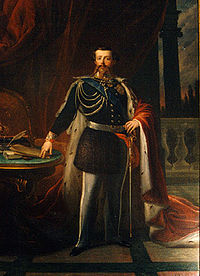
- Edmondo de Amicis (1846–1908), novelist, journalist, and short-story writer.
- Alighiero Boetti (1940–1994), artist.
- St. Giovanni Bosco (1815–1888), Catholic priest, educator and recognised pedagogue.
- Francesco Faà di Bruno (1825–1888), mathematician and priest.
- Italo Calvino (1923–1985), journalist and writer.
- Gaspare Campari (1828), drink maker.
- Felice Casorati (1883–1963), painter.
- Francesco Cirio (1836–1900), businessman.
- Alessandro Del Piero (born 1974), footballer.
- Renato Dulbecco (born 1914), he won a 1975 Nobel Prize in Physiology or Medicine.
- Umberto Eco (born 1932), medievalist, semiotician, philosopher, literary critic and novelist.
- Ludovico Einaudi (born 1955), contemporary classical music composer and pianist.
- Giulio Einaudi (1912–1999), publisher.
- Luigi Einaudi (1874–1961), politician and economist.
- Desiderius Erasmus[44][45] (1466/1469-1536), Dutch humanist and theologian.
- Michele Ferrero (born 1925), founder of Ferrero and richest man in Italy (November 2009)
- Paolo Fossati (1938–1998), art historian, editor, writer, journalist, teacher,.
- Guido Fubini (1879–1942), Mathematician.
- Leone Ginzburg (1909–1944), editor, writer, journalist, teacher, anti-fascist .
- Natalia Ginzburg (1916–1991), writer.
- Guido Gozzano (1883–1916), writer and poet.
- Antonio Gramsci (1891–1937), writer, politician and political theorist, founding member and onetime leader of the Communist Party of Italy.
- Primo Levi (1919–1987), chemist, philosopher, Holocaust survivor and writer.
- Cesare Lombroso (1836–1909), criminologist and founder of the Italian School of Positivist Criminology.
- Franco Lucentini (1920–2002), writer.
- Claudio Magris (born 1939) scholar, translator, writer and Italian senator.
- Joseph de Maistre (1753–1821), French-speaking Savoyard lawyer, diplomat, writer, and philosopher.
- Francesco Menzio (1899–1979), painter.
- Mario Merz (1925–2003), artist.
- Giulio Natta (1903–1979), chemist, won a Nobel Prize in Chemistry in 1963.
- Friedrich Nietzsche (1844–1900), German philosopher.
- Vilfredo Pareto (1848–1923), French-Italian sociologist, economist and philosopher.
- Cesare Pavese (1908–1950), poet, novelist, literary critic and translator.
- Michelangelo Pistoletto (1933–present), artist, associated with Arte Povera.
- Jean-Jacques Rousseau (1712–1778), French philosopher.
- Emilio Salgari (1862–1911), writer.
- Giovanni Virginio Schiaparelli (14 March 1835 – 4 July 1910) notable Italian astronomer
- Ascanio Sobrero (1812–1888), chemist.
- Germain Sommeiller (1815–1871), civil engineer.
- Gianni Vattimo (born 1936), author, philosopher, and politician.
- Elio Vittorini[46] (1908–1966), writer and novelist.
- Ugo Martinat (1942–2009) politician and Italian senator.
International relations
Twin towns and sister cities
- Americas
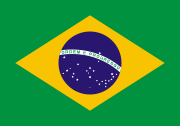 Campo Grande, Brazil[47]
Campo Grande, Brazil[47] Córdoba, Argentina[47]
Córdoba, Argentina[47] Detroit, United States[47]
Detroit, United States[47] Quetzaltenango, Guatemala[47]
Quetzaltenango, Guatemala[47] Salt Lake City, United States[47]
Salt Lake City, United States[47]
- Asia
- Collaboration accords with
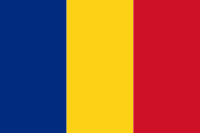 Bacău, Romania[47]
Bacău, Romania[47]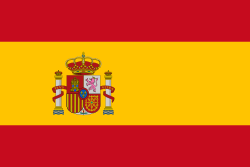 Barcelona, Spain[47]
Barcelona, Spain[47] Lyon, France[47]
Lyon, France[47] Cannes, France[47]
Cannes, France[47] Gwangju, South Korea[47]
Gwangju, South Korea[47]
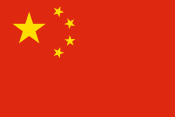 Harbin, China[47]
Harbin, China[47] Shenzhen, China[47]
Shenzhen, China[47] Vancouver, Canada[47]
Vancouver, Canada[47]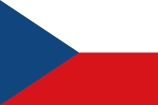 Zlín, Czech Republic[47]
Zlín, Czech Republic[47] Bogotá, Colombia[47]
Bogotá, Colombia[47]
Gallery
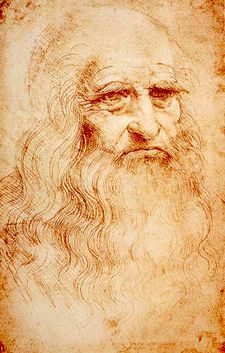 Self-portrait of Leonardo da Vinci, Royal Library of Turin |
 Ritratto Trivulzio, Antonello da Messina, Turin City Museum of Ancient Art |
 Self-portrait of Macrino d'Alba, Turin City Museum of Ancient Art |
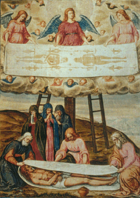 Descent from the Cross with the Shroud of Turin, Giulio Clovio, Sabauda Gallery |
_-_n._38_-_Torino_-_Armeria_Reale.jpg) Royal Armoury of Turin |
 Turin, view from Monte dei Cappuccini |
Gran Madre di Dio Church |
 San Lorenzo Church |
|
Piazza San Carlo |
_facade.jpg) Palazzo Carignano |
Palazzo Madama |
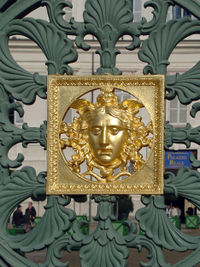 The Medusa heads on the gates of the Royal Palace of Turin |
 A view of Turin and Piazza Vittorio Veneto |
A small pedestrian street in the Borgo Dora |
 Royal Palace of Turin |
 Monte dei Cappuccini |
|
Museo del Risorgimento italiano |
 The Olympic Stadium |
 The Parco del Valentino |
 Tram |
References
 This article incorporates text from a publication now in the public domain: Herbermann, Charles, ed (1913). Catholic Encyclopedia. Robert Appleton Company.
This article incorporates text from a publication now in the public domain: Herbermann, Charles, ed (1913). Catholic Encyclopedia. Robert Appleton Company.
Notes
- ↑ ‘City’ population (i.e. that of the comune or municipality) from demographic balance: January–April 2009, ISTAT.
- ↑ 2.0 2.1 OECD. "Competitive Cities in the Global Economy". http://213.253.134.43/oecd/pdfs/browseit/0406041E.PDF. Retrieved 30 April 2009.
- ↑ "In Italy Online – From Ancient Art to Modern Technology in Turin". Initaly.com. http://www.initaly.com/regions/museums/sims.htm. Retrieved 26 December 2009.
- ↑ "Weekend – Turin: Modern". Discoveritalia. http://www.discoveritalia.com/cgwe/cittaOggi.asp?lingua=en&IDcitta=2. Retrieved 26 December 2009.
- ↑ "Slow Travel Italy – Turin: Simple Elegance by Anne Robichaud". Slowtrav.com. http://www.slowtrav.com/italy/piedmont/turin_simple_elegance.htm. Retrieved 26 December 2009.
- ↑ "Cavour, Count Camillo Benso di (1810–1861)". Ohio.edu. 22 April 1998. http://www.ohio.edu/Chastain/ac/cavour.htm. Retrieved 26 December 2009.
- ↑ "ITALIA – Egyptian Museum of Turin". Italiantourism.com. http://www.italiantourism.com/egizio.html. Retrieved 26 December 2009.
- ↑ 8.0 8.1 8.2 "Euromonitor Internationals Top City Destinations Ranking Euromonitor archive". Euromonitor.com. 12 December 2008. http://www.euromonitor.com/_Euromonitor_Internationals_Top_City_Destinations_Ranking. Retrieved 3 February 2010.
- ↑ "Turin – Culture & History". Sydney Morning Herald. http://www.smh.com.au/travel/travel-factsheet/turin--culture-amp-history-20081128-6m77.html. Retrieved 26 December 2009.
- ↑ CENSIS
- ↑ 11.0 11.1 "City Mayors reviews the richest cities in the world in 2005". Citymayors.com. 11 March 2007. http://www.citymayors.com/statistics/richest-cities-2005.html. Retrieved 26 December 2009.
- ↑ 12.0 12.1 "Global City GDP Rankings 2005 and by 2020". SkyscraperCity. http://www.skyscrapercity.com/showthread.php?t=454910. Retrieved 26 December 2009.
- ↑ "GaWC – The World According to GaWC 2008". Lboro.ac.uk. 3 June 2009. http://www.lboro.ac.uk/gawc/world2008t.html. Retrieved 26 December 2009.
- ↑ Zamagni, Vera. The Economic History of Italy 1860 ... – Google Books. Books.google.co.uk. ISBN 9780198292890. http://books.google.co.uk/books?id=DJvGpo_CH-UC&pg=PA98&lpg=PA98&dq=turin+automobile+industry&source=bl&ots=u3U72wY0AR&sig=IZNs-eWww1QDmfDrpxFikFWrc1c&hl=en&ei=7MHlSpvUL8Wr4QaV-q2LDQ&sa=X&oi=book_result&ct=result&resnum=2&ved=0CA4Q6AEwAQ#v=onepage&q=turin%20automobile%20industry&f=false. Retrieved 26 December 2009.
- ↑ Encyclopædia Britannica. "Turin (Italy) – Britannica Online Encyclopedia". Britannica.com. http://www.britannica.com/EBchecked/topic/609705/Turin. Retrieved 26 December 2009.
- ↑ "The city's history". Turismo e promozione. Città di Torino. http://www.comune.torino.it/canaleturismo/en/history.htm. Retrieved 31 August 2007.
- ↑ "Turin's History". Italianrus.com. Anthony Parenti. http://www.italiansrus.com/articles/torinohistory_part4.htm. Retrieved 9 May 2010.
- ↑ Willis D. Crittenberger, "The final campaign across Italy"; year of edition 1952 ISBN 857011219x
- ↑ Mascarenhas de Moraes, The Brazilian Expeditionary Force, By Its Commander US Government Printing Office, 1966. ASIN B000PIBXCG
- ↑ http://upload.wikimedia.org/wikipedia/commons/3/32/World_Koppen_Map.png
- ↑ "Torino Turistica – Servizio Telematico Pubblico – Città di Torino". Comune.torino.it. http://www.comune.torino.it/canaleturismo/en/clima.htm. Retrieved 6 May 2009.
- ↑ "Visualizzazione tabella CLINO della stazione / CLINO Averages Listed for the station Milano Linate" (in Italian). Italian Air Force Meteorological Service. http://www.meteoam.it/modules.php?name=viewClinoFile&station=080&name_station=Milano%20Linate. Retrieved 2010-05-26.
- ↑ Dossier Musei 2007 "I Dossier del Touring Club Italiano: Dossier Musei 2007" (in Italian). Touring Club Italiano. http://www.touringclub.it/ricerca/pdf/DOSSIER_MUSEI_2007.pdf Dossier Musei 2007.
- ↑ "Quelle meraviglie Mai Viste In Italia" (in Italian). La Repubblica (Italy). 3 December 2008. http://ricerca.repubblica.it/repubblica/archivio/repubblica/2008/12/03/quelle-meraviglie-mai-viste-in-italia.html. Retrieved 21 May 2009.
- ↑ "Mao Il Tesoro Dell' Arte Orientale" (in Italian). La Repubblica (Italy). 3 December 2008. http://ricerca.repubblica.it/repubblica/archivio/repubblica/2008/12/03/mao-il-tesoro-dell-arte-orientale.html. Retrieved 21 May 2009.
- ↑ "Catholic Encyclopedia (1913)/Turin – Wikisource". En.wikisource.org. 7 March 2007. http://en.wikisource.org/wiki/Catholic_Encyclopedia_(1913)/Turin. Retrieved 14 June 2010.
- ↑ Città di Torino – Verde Pubblico|
- ↑ 20com% 20St% 20ecosistema% 20bambino% 202007.pdf Ecosystem child. Report Legambiente |
- ↑ "Statistiche demografiche ISTAT". Demo.istat.it. http://demo.istat.it/str2006/index.html. Retrieved 30 April 2009.
- ↑ "Statistiche demografiche ISTAT". Demo.istat.it. http://demo.istat.it/pop2007/index.html. Retrieved 30 April 2009.
- ↑ "Football Derbies: Derby della Mole". footballderbies.com. http://www.footballderbies.com/honours/index.php?id=39. Retrieved 8 March 2008.
- ↑ "Juventus building bridges in Serie B". fifa.com. http://www.fifa.com/worldfootball/clubfootball/news/newsid=107733.html#juventus+building+bridges+serie+b. Retrieved 20 November 2006.
- ↑ Only Milan (with 18 titles), Boca Juniors (18) and other three clubs: Independiente, Real Madrid (both with 15) and Al-Ahly (14) have won more official international titles.
- ↑ "La primera final italiana" (in Spanish) (PDF). La Vanguardia. 15 May 2003. p. 55. http://hemeroteca.lavanguardia.es/preview/2003/05/15/pagina-55/34004153/pdf.html. Retrieved 15 November 2009.
- ↑ "European clubs facts: Juventus FC". UEFA Official website. http://en.uefa.com/footballeurope/club=50139/domestic.html. Retrieved 2 October 2007.
- ↑ "UEFA club competitions press kit (.PDF archive, page 23)". UEFA Official website. http://www.uefa.com/printoutfiles/competitions/supercup/2006/e/e_84343_pk.pdf. Retrieved 25 August 2006.
- ↑ "FIFA Classic Clubs: Juventus FC". FIFA Official website. http://www.fifa.com/classicfootball/clubs/club=31085/detail.html. Retrieved 31 August 2007.
- ↑ "Torino – Turin Italy City Profile". http://www.archaeolink.com/torino_turin_city_profile.htm. Retrieved 18 April 2007.
- ↑ Neus, Elizabeth (19 January 2006). "Olympics by the numbers". USA Today. http://www.usatoday.com/sports/olympics/torino/2006-01-19-gns-by-numbers_x.htm. Retrieved 18 April 2007.
- ↑ The 2002 Salt Lake City games also claims this title because at the time of the Olympics its Combined Statistical Area population was 1,516,227 and some events were held in the Provo metropolitan area of 400,209 (tables from the Census). . Accessed 6 March 2009. Archived 16 May 2009.
- ↑ Judd, Ron C. (2 July 2003). "Vancouver to host 2010 Winter Olympics". The Seattle Times. http://archives.seattletimes.nwsource.com/cgi-bin/texis.cgi/web/vortex/display?slug=webvancouver02&date=2003-07-02. Retrieved 18 April 2007.
- ↑ "Le proiezioni cinematografiche a Torino" – di Pierluigi Capra
- ↑ Servizio TorinoPlus del Comune di Torino|
- ↑ http://www.eresie.it/id337.htm eresie.it (Italian) Retrieved on 6 October 2007
- ↑ http://cronologia.leonardo.it/mondo41e.htm cronologia.leonardo.it (Italian) Retrieved on 2007–10-06
- ↑ [1] (Italian) Retrieved on 3 November 2007
- ↑ 47.00 47.01 47.02 47.03 47.04 47.05 47.06 47.07 47.08 47.09 47.10 47.11 47.12 47.13 47.14 47.15 47.16 47.17 47.18 47.19 47.20 47.21 47.22 47.23 47.24 47.25 47.26 47.27 Turin City Hall – International Affairs (English) Retrieved on 26 January 2008.
- ↑ "Lile Facts & Figures". Mairie-Lille.fr. http://www.mairie-lille.fr/sections/site-en/Menu_horizontal_haut/discovering-lille/lille-facts-figures/lille-facts-figures. Retrieved 17 December 2007.
- ↑ "Twinning Cities: International Relations (NB Turin is listed as 'Consiglio Comunale di Torino')" (PDF). Municipality of Tirana. www.tirana.gov.al. http://www.tirana.gov.al/common/images/International%20Relations.pdf. Retrieved 23 June 2009.
External links
 Media related to Turin at Wikimedia Commons
Media related to Turin at Wikimedia Commons- The official institutional site—website version is in Italian – Also some pages in English, German, Spanish, French, Romanian, Arabic, and Albanian
- Turismo Torino The official tourist guide, available in English, Italian, French, Spanish and German.
- Turin 2006 Olympic Games—English, Italian and French. Website version is in Italian.
- Egyptian Museum of Turin.
- National Cinema Museum of Italy.
- CityMayors article.
- Winter Universiade Torino 2007—English, Italian and French. Website version is Italian.
- Torino Film Festival
- International Book Fair.
- Turin and the Gates of Hell – Interview with Dr Leo Ruickbie.
- WorldStatesmen- Italy
- The Turin social network
- About Turin: tourist guide to Turin, Italy—English and Italian.
- Gran Madre di Dio at night.
|
|||||||||||||||||||||||||||||||||||||||||||
